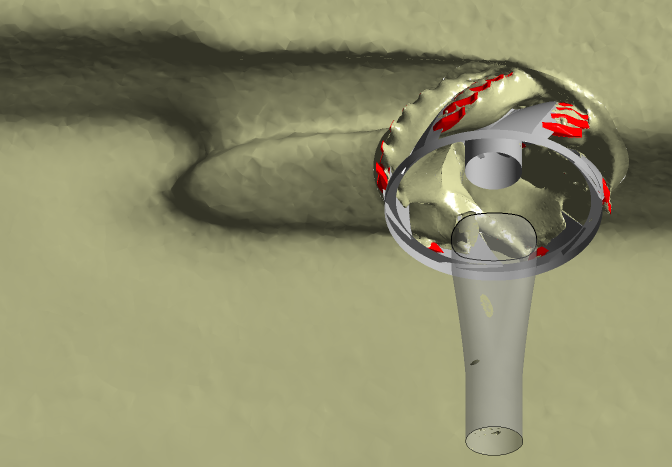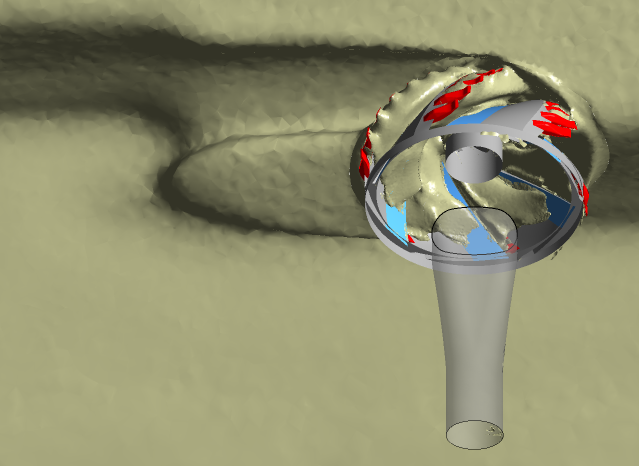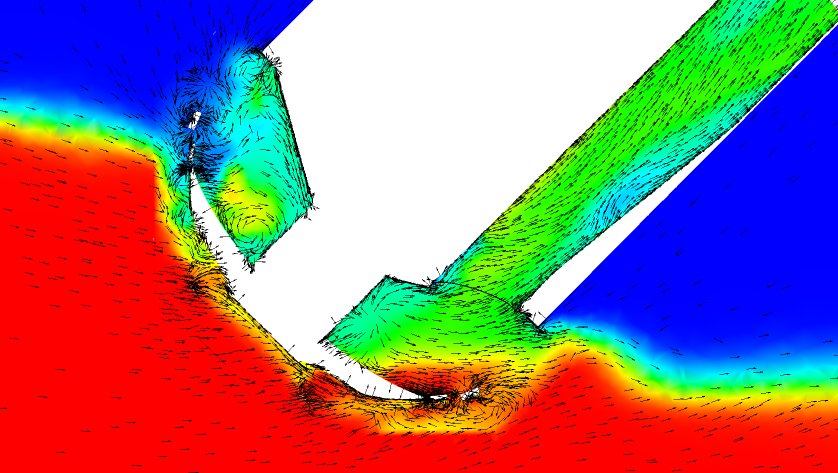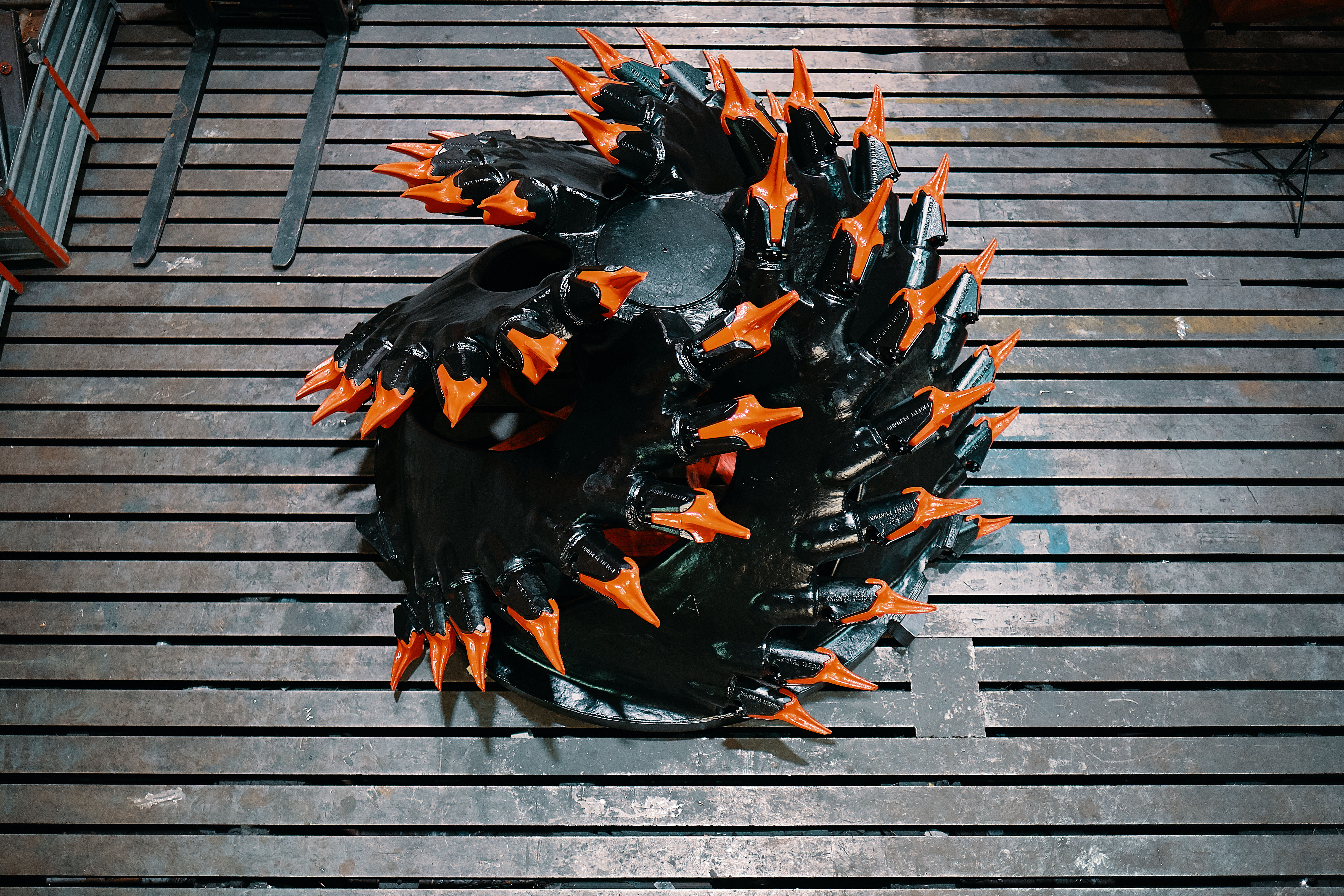Ahead of the curve

The newly designed Curve Tooth cutter heads from IHC Dredging are the result of extensive studies on the cutter dredging process. It also comes in response to customer requirements and feedback on existing large cutter head systems currently available.
“Our customers always want cutter heads to be stronger, more wear-resistant and capable of higher production,” says Peter de Graaff, Product Manager for Beavers®, who was involved in this development. “We talked to clients about their experiences and took their thoughts about existing systems on board. With the new CurveTooth system, we have tried to take cutter systems to a higher level and improve on those currently available on the market.”
While Royal IHC’s new offering resembles some of the existing large cutter systems in the market, Royal IHC has also made some major improvements. These enhancements have resulted in three patents on the IHC CurveTooth cutter system.
“Until now, our cutter heads were not available for cutter suction dredgers above 1,500kW. The market is dominated by two companies, which works to our benefit,” says Hasan Bugdayci, Product Manager for cutter excavation equipment at Royal IHC. “We studied the available systems in the market extensively, and looked for their best features – namely the system that is used to fit the teeth into the adapter, and how this adapter fits onto the cutter body, and the hammerless locking mechanism.
“We then added our own ingenuity and the CurveTooth cutter head was born. So it looks similar to both of the competitor versions, and it has added features, which make our system superior to both of them.”
Added ingenuity
One of the main features of the IHC Curve Tooth cutter head is its single-cast cutter body, which makes it intrinsically strong and durable, as there are no weak points resulting from welding. “It’s a complex shape, and difficult to cast, but we have succeeded. It’s one piece of continuous material, unlike our competitors’ versions, which are welded together after casting. The resulting strength is important when considering the amount of force the cutter head has to endure.
Furthermore, combining the intrinsic strength of a cast cutter body with the larger freedom in shapes of casting in general makes it possible to create a stronger and lighter cutter body.”
The body can also be manufactured traditionally as a welded construction, however, to meet requirements.
Comparison of cutting, mixture forming and spill calculated and visualised by CFD for two cutter head designs.






Inspired by nature
The cutting segment of the newly designed teeth show an elegant curvature inspired by nature. The curved design of the tooth is also stronger and more compact than competitors, and is able to withstand higher strains and stresses with the smallest possible cross-sectional area of the teeth. The cutting segment of the whole tooth is based on a specific snail’s tooth found to be very effective since it is used to scrape food from rocks. “This delicate creature has found a way of surviving and thriving while attacking one of the hardest materials in nature,” says Hasan.
“The curved teeth have a small cutting surface and high penetration force so achieve optimal strength versus wear resistance,” he adds. A patented part of the design, the teeth are unique in the market, so it’s immediately identifiable as Royal IHC.
Another advantage of the new IHC cutter system is that the cutting element of the teeth is self-sharpening. The wear is always perpendicular to the cutting area, so there is always a sharp edge entering the soil and it won’t become blunt over time, similar to the teeth of the snail.
Curvature in the tail of teeth has also improved the fixation of the teeth to the adapter – and this element of the design is one of its three registered patents. The curvature follows the natural flow paths of the mixture preventing all unnecessary resistance and wear. The curved tail design also prevents the teeth from falling out of the adapter, and increases the strength of the tooth, so it is able to withstand forces from different directions during operation.
The locking mechanism is also a completely new design. It is designed with safety in mind following the current standard in the market of hammerless operation. But the new locking mechanism incorporates further benefits. It is integrated inside the tooth, so no soil or other abrasive materials can damage it.
“With other designs, the locking mechanism is on the outer part, making it more vulnerable,” says Peter. This element of the design is another of its registered patents.


User-friendly
An additional benefit of this is that it enables the teeth to be easily replaced by one person. “Customers told us that when replacing teeth, two people were required – one to hold the tooth, and another to do the locking mechanism,” says Peter. “We put the locking mechanism inside the tooth, so when the cutter ladder is lifted to change the teeth, it is quickly and easily done by one person. Tooth exchange is faster with our system to meet market demand.”
In addition to its innovative design, Royal IHC has also ensured that the teeth are manufactured from the highest quality material to match the premium quality teeth available from current leaders in the market. A foundry in Germany, which is renowned for supplying parts to the dry mining industry, supplies the adapters and teeth.
The cutter body is cast at Royal IHC’s foundry in Belgium. In short: “We have partnered with high-level suppliers to realise our design and manufacture it entirely in Europe,” says Peter. Different sizes of the cutter head will be available – suitable for handling all types of soils, from easy flowing sand and silt to stiff clay, hard-packed sand, as well as light and heavy-duty rock applications. The system will be most suited to cutter suction dredgers (CSDs) from 1,000 to 6,000kW.
The first cutter head, the IHC CT 40, has been fitted to a recently IHC-built 1,500kW CSD, for a customer based in the Middle East, and tests are expected to start soon. “This client is open to trying new alternatives and was willing to assist us in investigating the performance of our new cutter head in practice, and testing it.” says Hasan.
Two other customers in the Middle East are considering the possibilities of using a new Curve Tooth cutter head on their vessels. The region is ideal for testing the new equipment due to the hard layer of bedrock commonly found below the seabed. The majority of vessels used in the Middle East are 1,500 to 4,000kW CSDs, which would be within the target market for the new IHC cutter head. “It’s a good starting point for us to do a pilot at the smaller end of the market,” says Peter. “We are starting with 1,500kW vessels, the smallest of the larger ships used to excavate rock.”
Closing the gap
The introduction of the Curve Tooth cutter system has enabled Royal IHC to extend its product offering to customers and cater for larger vessels. “Previously, we had cutters for up to 1,000kW vessels, but since 2004, when a new generation of CSDs came on to the market, requiring more powerful cutters, we weren’t able to deliver for those,” says Hasan. “But now we have closed the gap. We are already
the leading party in pumping and pump development – which is critical for dredge performance – and now we have the knowhow to produce superior cutter heads.”
Capable of handling the toughest soils, with teeth mounted on a single-cast body, easy to replace and exceptionally durable and long-lasting, the CurveTooth cutter head is an attractive and cost-effective solution.


Stay up to date with the latest news
Wondering what we at Royal IHC are up to? Sign up for our newsletter where we highlight our latest innovations, new solutions and delve into market challenges.